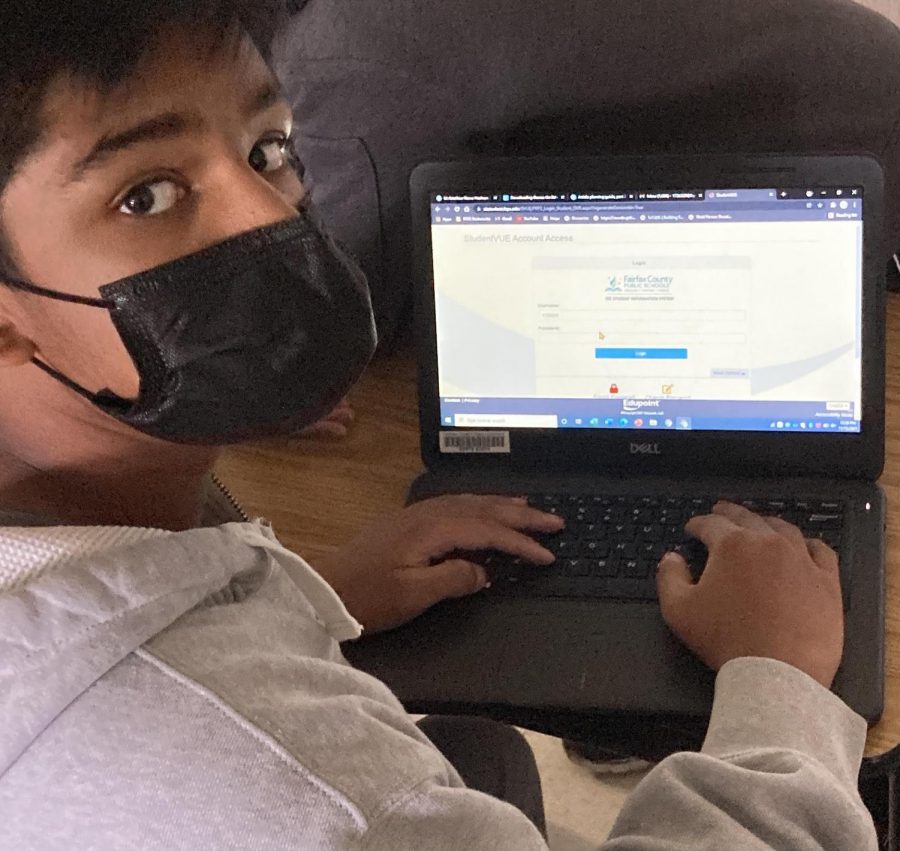Students and staff adjust to two new grading policies
RCMS is well into its second year with two grading policies that began during the pandemic. This year, the administration decided to continue following the rolling gradebook as well as the minimum 50 percent rule.
The rolling gradebook is a grading system where grades transfer over from quarter to quarter instead of resetting at the end of the quarter and calculating quarterly averages.
A back-to-school night presentation stated the reason for this policy: “We believe that this approach will support the mastery of learning and help students gain a better picture of overall learning point at this time.”
Some of the more positive feedback about the system is in regards to being able to see problems and fix them.
“I think it will probably make my grades better I can see what is going wrong and fix it easily,” said Ben Do, seventh-grader on the Trailblazers team.
Some staff members feel that the rolling gradebook is an improvement to the quarterly average system, because it is more open with the students about their grade.
“The rolling gradebook is very much also about how we show students their grades,” said Mr. William Darr, seventh-grade history teacher on the Champions team. “It’s just more honest.”
Some teachers also feel that it is important so students who had a difficult time at one point can catch up.
“The rolling gradebook is in place so students have an opportunity to catch up because it does not reset student grades at the end of the quarter and students can see what they need to do to catch up,” said Mr. Darr.
Lyla Humphrey, a seventh-grader on the Majestics team, said, “Whether or not the rolling gradebook benefits you depends on what type of student you are. Some do better with a fresh start.”
Although students don’t get a clean slate, they could start a quarter with passing grades if they did well during the previous quarter. If you end quarter one with all A’s, those grades would go into quarter two.
“With the rolling gradebook, you don’t have to re-earn your grades,” said Rishi Illendhula, a seventh-grader on the Trailblazers team.
On the other hand, if a student ends a quarter with poor grades, those follow through into the next quarter.
“I’m used to having it start over in a way or having a blank slate with the start of each quarter, and I believe students are used to that method as well,” said seventh-grade Legacy English teacher, Ms. Amy Allen, “but perhaps I haven’t had a long enough experience with the rolling grade book to change my mind about the makeup possibilities of a rolling gradebook.
“Some students really need that fresh start,” Ms. Allen added.
Some students said it can be harder to maintain a good grade when a full year’s assignments are averaged together rather than resetting each quarter.
“I think it makes a bad grade hard to come back from,” said Anna Vardanyan, a seventh-grader on the Dream Team.
CJ Berejik, an eighth-grader on the Xtreme Team, said it doesn’t matter in the end.
“I just don’t think it makes a difference to my final grades,” CJ said. “I really just don’t care.”
Some staff also believe that it does not change students’ final grades.
“I don’t really think it changes the grade so much as it shows the grades differently,” said Mr. Darr.
50 percent rule also continues
The 50 percent rule also continues from last year. This policy requires teachers to give students at least 50 percent on any given assignment. Although it is higher than a zero, 50 percent is still an F.
“You can’t get the exact percentage you deserve, but it’s still the same letter grade,” Rishi said.
A 50 percent is much easier to raise than a zero. A zero is considered a “kill grade,” meaning that a student could have a 90 percent average in one class, but if they receive a zero, their grade will plummet and it will be extremely difficult to get back up. With the 50 percent rule, students have a better chance of being able to revive a grade.
Getting grades back up
When students’ grades do drop, many find it difficult to get them back up. Students can check their current grades for each class in SIS. SIS tells students whether or not they have a missing assignment in a class.
“Talk to your teachers,” Ms. Allen said. “We are so much more understanding of a student who wants to do well rather than a student who lets their grades slip and never comes to talk to us.”
Students are also given time during school to finish up work, Panther Time. Utilizing this time may be very helpful as well.
“If your grades start to fall, work as hard as you can and don’t give up,” Lyla said.








